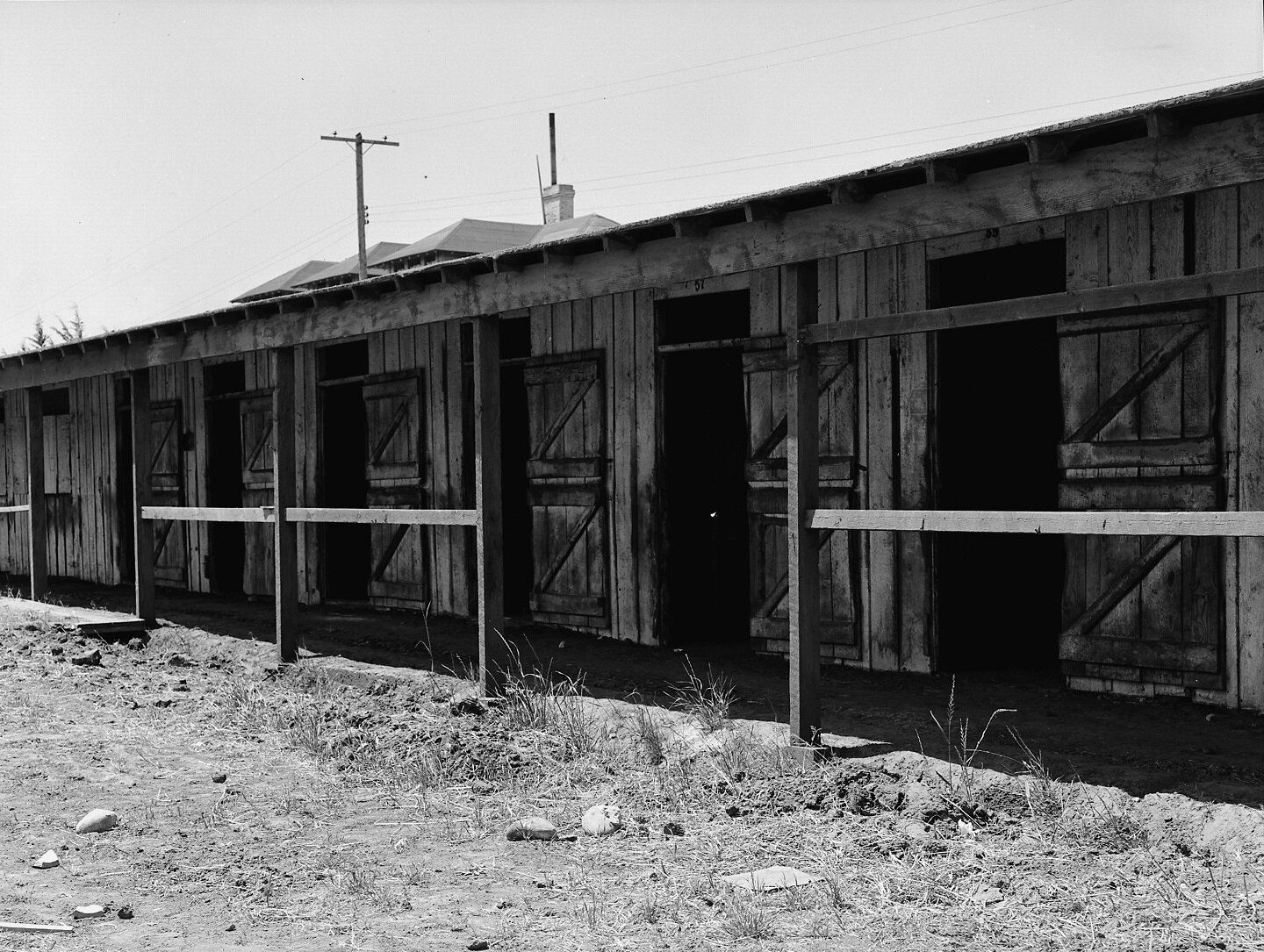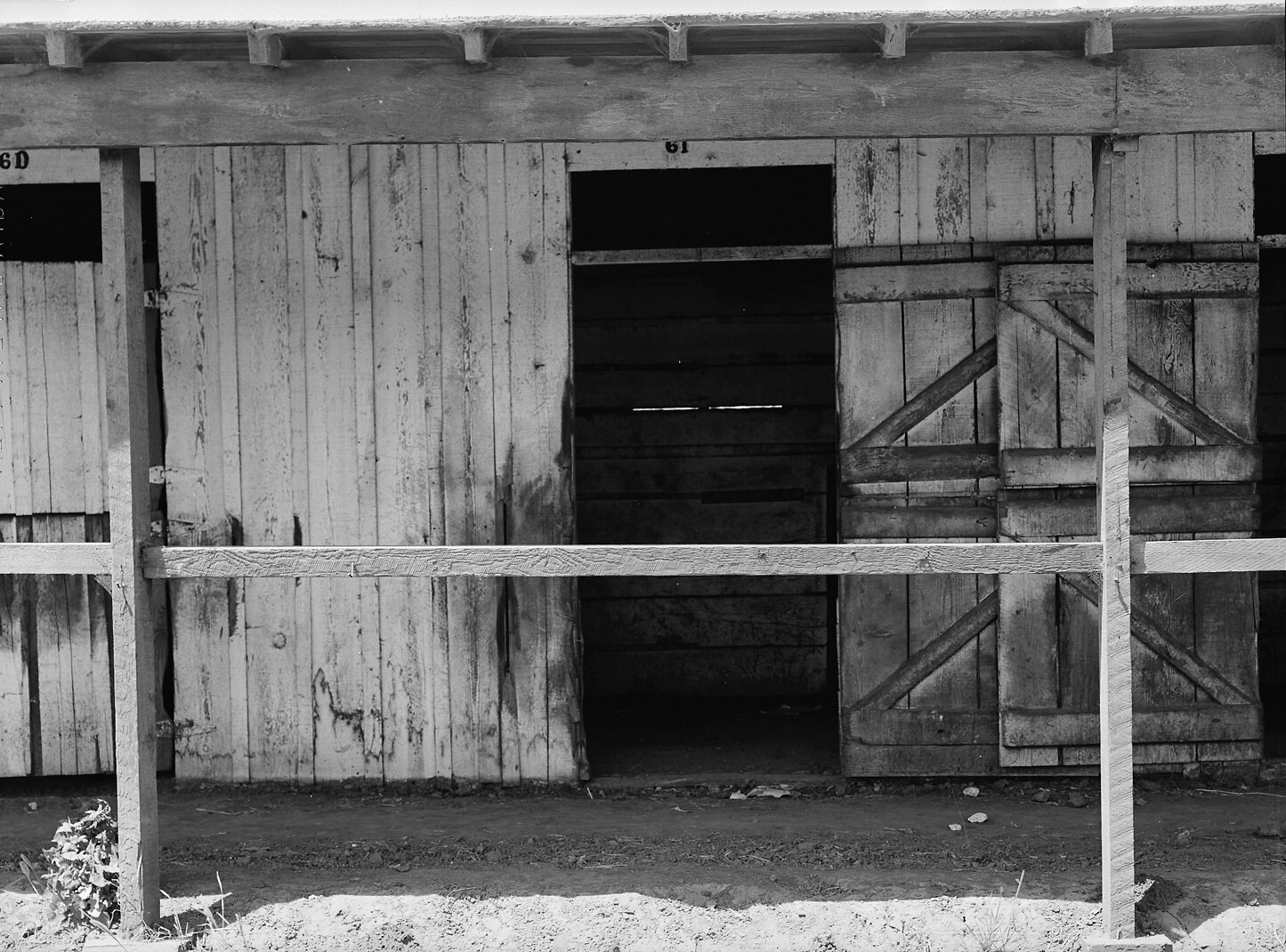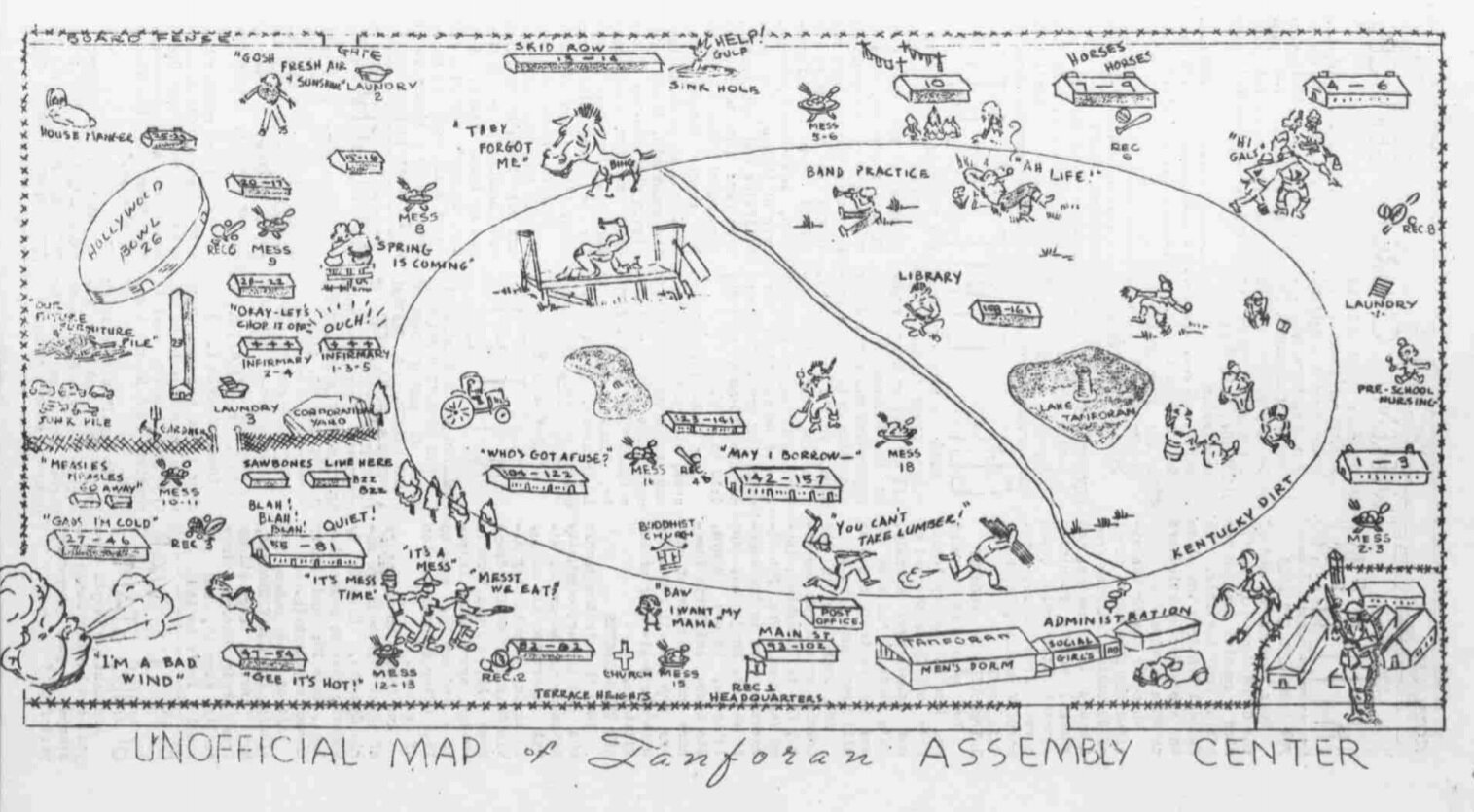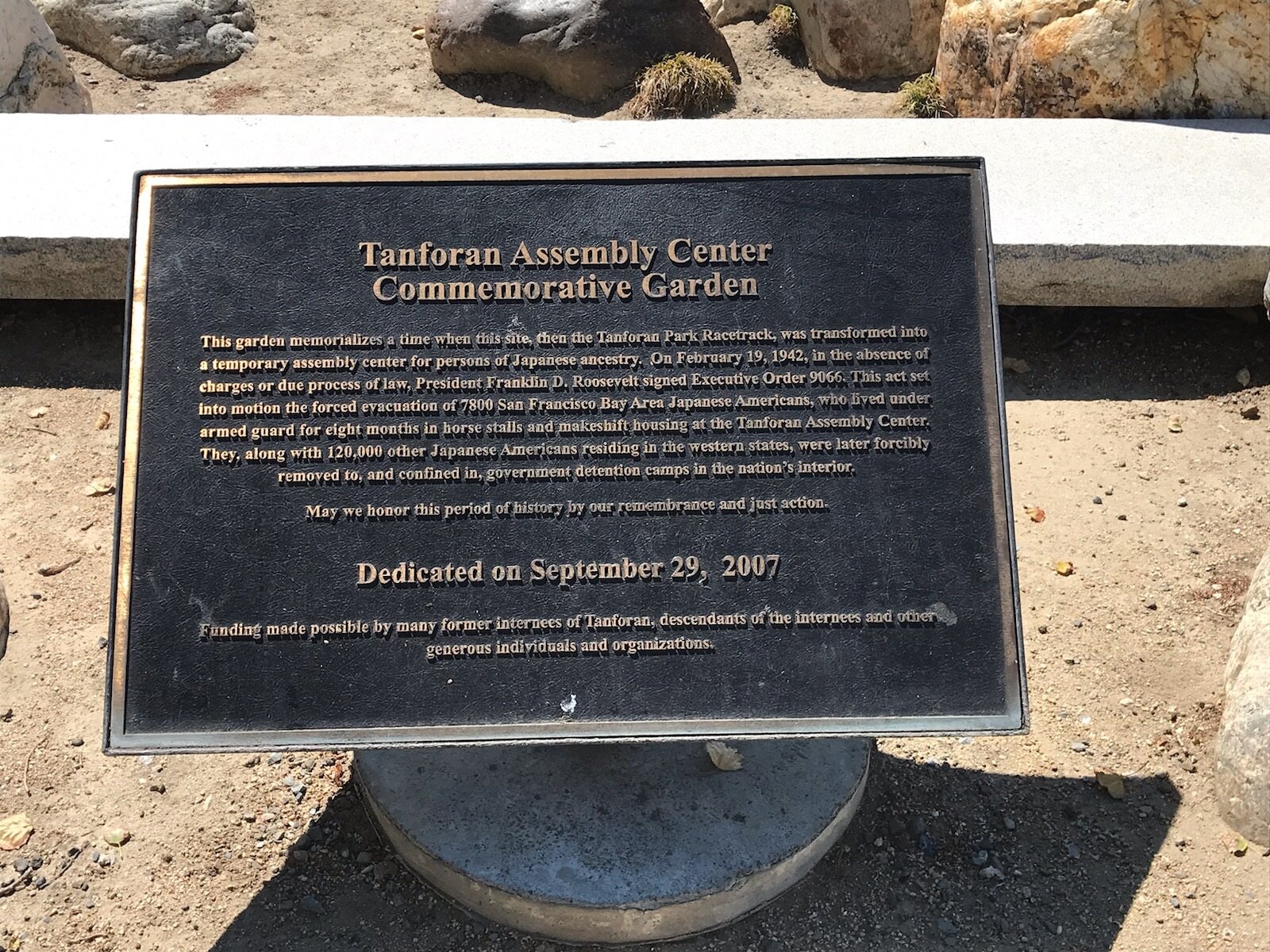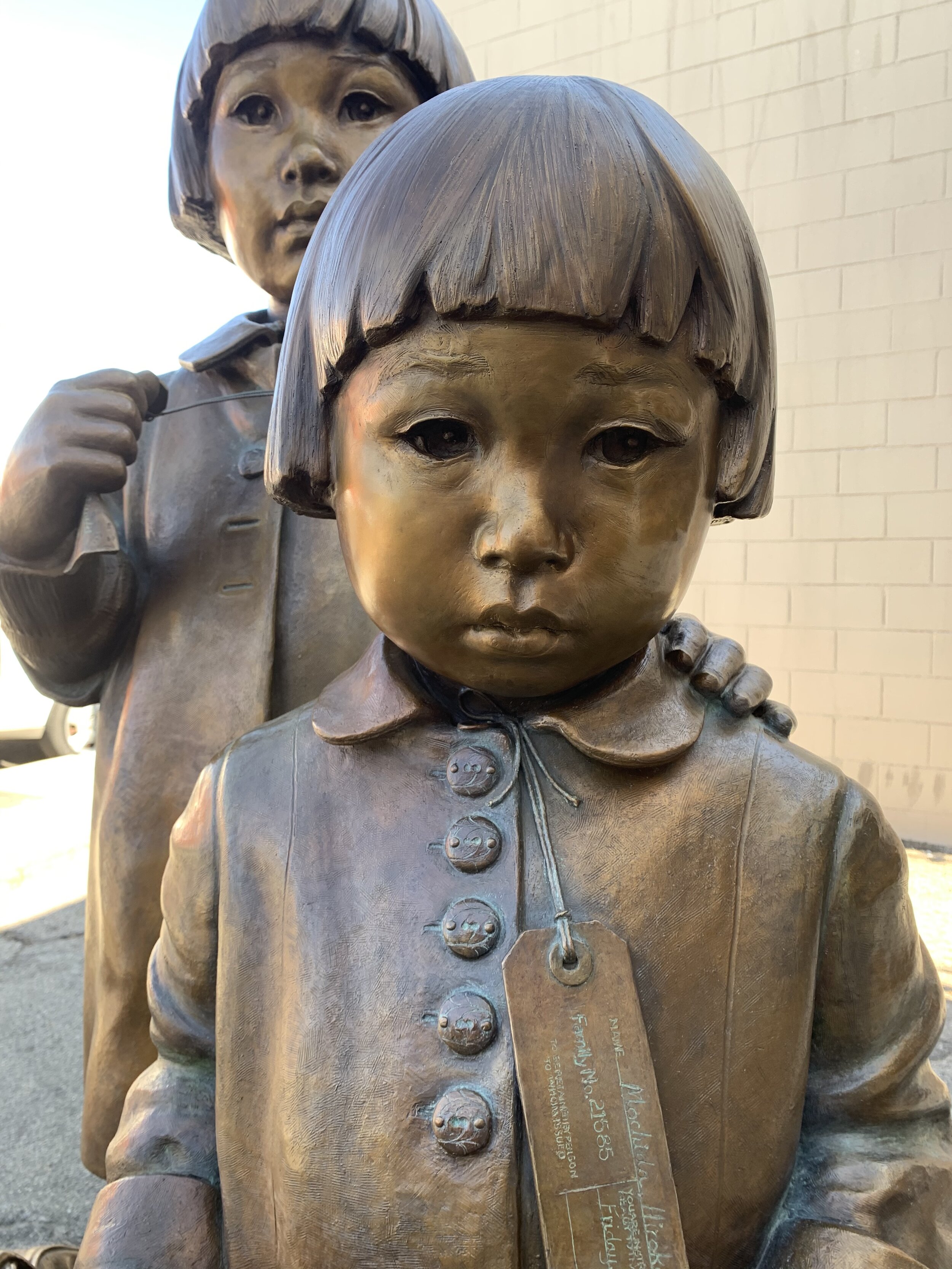The Chronicles of Shinjitsu:
Americans Of Japanese Heritage
Part Five
Tanforan Park
April 10, 2021
These photographs show some of the “horse-stalls, left from the days when what is now
Tanforan Assembly Center [Tanforan Prison], was the famous Tanforan Race Track. Most of these
stalls have been converted into family living quarters for Japanese,” according to The United States
National Archives and Records Administration.
(The photographs were created by Ms. Dorothea Lange for the War Relocation Authority of the
U S Department of the Interior and provided courtesy of The United States National Archives
and Records Administration, June 16, 1942.)
San Mateo County is the site of The Shops at Tanforan, a retail center that attracts customers from throughout the San Francisco Bay Area. In years past, the same property in the City of San Bruno was the site of the Tanforan Park Racetrack.
For a time, though, the same ground was used by the United States of America to imprison Americans of Japanese heritage.
According to National Park Service, this property was used as the Tanforan Assembly Center [Tanforan Prison] from April 28 to October 13, 1942, to house a total of 8,033 individuals from throughout the Bay Area; a maximum of 7,816 persons were held at any one time at this site. “The assembly center [prison] had about 130 barracks, half within the racetrack infield. In addition, stables were used to house evacuees, as at Santa Anita [Prison in Los Angeles County].” The vast majority of the Americans housed at the Tanforan Prison were eventually sent to the Central Utah Relocation Center [Central Utah Prison]; that site in Millard County, Utah, was also known as the “Topaz Relocation Center” [Topaz Prison].
An “Unofficial Map” of the Tanforan Assembly Center [Tanforan Prison] was
published in the Tanforan Totalizer dated May 15, 1942.
(This image was provided courtesy of the Library of Congress, 1942.)
As is the case with many prisons in the United States, religious services were available to the people living at the Tanforan Prison. The edition of the Tanforan Totalizer dated May 15, 1942, detailed that Buddhist, Protestant, Roman Catholic, and Seventh-day Adventist religious services were held in Mess Halls 17, 14, 3, and 17, respectively, on that subsequent weekend.
Unusual, though, for a prison are services for “babies and invalids.” The same issue of the Tanforan Totalizer indicated that “Near the north end of the Grand Mess Hall you'll find a special Kitchen for babies and invalids. The Medical Center's the place to apply for particulars on this service. When our Roving Man visited the Kitchen, a total of 99 babies, ranging from 2 weeks to 18 months, and several adults requiring special diets were being served from there.”
Imagine any other prison operating today in this country where the Federal government would house “…99 babies, ranging from 2 weeks to 18 months…” in custody.
A number of people and organizations have strived to keep alive the memories of what happened at this property. Three memorials currently exist at Tanforan. A new memorial is in the process of being placed here.
A rendering of the design for the Tanforan Assembly Center Commemorative Garden.
(The image was provided courtesy of the Japanese Cultural and Community Center of Northern California, 2007.)
The Japanese Cultural and Community Center of Northern California led the efforts to create the Tanforan Assembly Center Commemorative Garden in 2007. This remembrance garden is located in the parking lot of The Shops at Tanforan. “We wanted to create a permanent memorial to the people who were interned at Tanforan while many of these individuals were still alive,” stated Mr. Paul Osaki, Executive Director of the Japanese Cultural and Community Center of Northern California. “2007 was the 65th anniversary of the opening of the Tanforan Assembly Center in 1942.”
“This garden memorializes a time when this site, then the Tanforan Park Racetrack, was transformed into a temporary assembly center for persons of Japanese ancestry. On February 19, 1942, in the absence of charges or due process of law, President Franklin D. Roosevelt signed Executive Order 9066. This act set into motion the forced evacuation of 7800 San Francisco Bay Area Japanese Americans, who lived under armed guard for eight months in horse stalls and makeshift housing at the Tanforan Assembly Center. They, along with 120,000 Japanese American residing in the western states, were later forcibly removed to, and confined in, government detention camps in the nation's interior.”
“May we honor this period of history by our remembrance and just action.”
“Dedicated on September 29, 2007”
“Funding made possible by many former internees of Tanforan, descendants of the internees and other generous individuals and organization.”
Inscription at the Tanforan Assembly Center Commemorative Garden.
Tanforan Assembly Center Commemorative Garden.
(Photographs provided courtesy of Doug Yamamoto.)
In addition to the existing Tanforan Assembly Center Commemorative Garden, the events at Tanforan are remembered in a photo exhibit at the San Bruno Station of Bay Area Rapid Transit (BART) as well as through an historical plaque installed by the previous owner of what was then called the “Tanforan Shopping Center.”
According to a news statement from BART, “The San Bruno BART station is home to the Tanforan Assembly Center Memorial, a collection of pictures and displays that shows when a horsetrack was turned into a temporary holding center for some eight thousand Japanese-Americans during World War Two.”
A more extensive memorial is in the process of being installed to remember the Americans imprisoned at this site in San Mateo County.
The planned Tanforan Assembly Center Memorial will include a bronze statue of two children, explicitly incorporating the fact that children were among those housed at this prison. Mr. Doug Yamamoto, Member of the Tanforan Assembly Center Memorial Committee, explained that in addition to the statue, “The memorial will include a wall listing the names of all of the individuals housed at Tanforan as well as a photo exhibit.”
The memorial will be located at the San Bruno Station of BART. Mr. Yamamoto noted that the location is critical for this memorial. “We wanted a site that people from throughout the San Francisco Bay Area would be able to visit by a variety of means of transportation,” he stated. “Accessibility – especially through public transportation – is important. Most of the places where Japanese Americans were interned were located far away from population centers. We wanted some place where people living in the Bay Area and nearby regions could visit and bear witness to what happened to Japanese Americans.”
This statue is part of the planned Tanforan Assembly Center Memorial.
(The photograph was produced by Brett Barney from American Fine Arts Foundry
and was provided by Doug Yamamoto of the Tanforan Assembly Center Memorial Committee.)
In the next edition of The Chronicles Of Shinjitsu, we will detail additional aspects of the Tanforan Assembly Center (Tanforan Prison). Aspects of justice and kindness known by few people.
Do you have questions about Japanese American communities?
A street name? A building?
Your questions may be used in a future news column.
Contact Richard McDonough at chroniclesofshinjitsu@protonmail.com.
© 2021 Richard McDonough
